
Regulation of T-cell differentiation by CD2 and CD28 accessory molecules.
R de Jong
P Stokkers
E Lamme
J M Kool
F Borst
M Brouwer
F Miedema
R A van Lier
Abstract
It was analysed to what extent the functional T-cell responses that result from T-cell receptor (TcR)/CD3 triggering differ from responses that are induced after simultaneous ligation of CD2 and CD28 accessory molecules. To allow a quantitative comparison of these activation pathways, purified lymphocytes were stimulated with either graded densities of immobilized anti-CD3 monoclonal antibodies (mAb) or with increasing amounts of anti-CD28 mAb in the presence of a constant concentration of anti-CD2 mAb. Both activation systems were sensitive to the regulatory properties of CD11a/CD18 molecules. T-cell stimulation via CD2/CD28 molecules induced a more potent release of interleukin-2 (IL-2) and more pronounced T helper (Th) cell responses than T-cell stimulation via the TcR/CD3 complex, whereas CD25 expression was more readily initiated after T-cell activation via the TcR/CD3 complex. Optimal Th cell differentiation was detected under conditions of suboptimal receptor occupancy whereas, in contrast, optimal cytolytic T lymphocyte (CTL) differentiation required optimal TcR/CD3 or CD2/CD28 engagement. The findings indicate that T-cell differentiation can be influenced in a qualitative manner by the strength of the activation signal provided, and suggest that antigen-specific T-cell responses might be regulated in a quantitative manner through CD2 and CD28 accessory molecules.
Full text
PDF
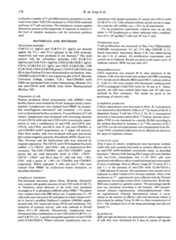


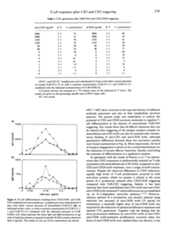
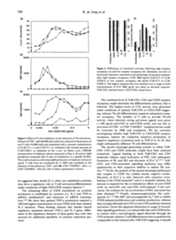
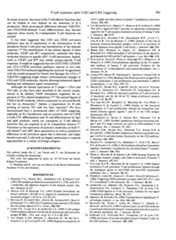
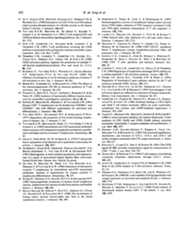
Selected References
These references are in PubMed. This may not be the complete list of references from this article.
- Bierer B. E., Schreiber S. L., Burakoff S. J. The effect of the immunosuppressant FK-506 on alternate pathways of T cell activation. Eur J Immunol. 1991 Feb;21(2):439–445. doi: 10.1002/eji.1830210228. [DOI] [PubMed] [Google Scholar]
- Bloemena E., Van Oers R. H., Weinreich S., Stilma-Meinesz A. P., Schellekens P. T., Van Lier R. A. The influence of cyclosporin A on the alternative pathways of human T cell activation in vitro. Eur J Immunol. 1989 May;19(5):943–946. doi: 10.1002/eji.1830190524. [DOI] [PubMed] [Google Scholar]
- De Jong R., Brouwer M., Rebel V. I., Van Seventer G. A., Miedema F., Van Lier R. A. Generation of alloreactive cytolytic T lymphocytes by immobilized anti-CD3 monoclonal antibodies. Analysis of requirements for human cytolytic T-lymphocyte differentiation. Immunology. 1990 Jul;70(3):357–364. [PMC free article] [PubMed] [Google Scholar]
- Denning S. M., Dustin M. L., Springer T. A., Singer K. H., Haynes B. F. Purified lymphocyte function-associated antigen-3 (LFA-3) activates human thymocytes via the CD2 pathway. J Immunol. 1988 Nov 1;141(9):2980–2985. [PubMed] [Google Scholar]
- Dianzani U., Zarcone D., Pistoia V., Grossi C. E., Pileri A., Massaia M., Ferrarini M. CD8+CD11b+ peripheral blood T lymphocytes contain lymphokine-activated killer cell precursors. Eur J Immunol. 1989 Jun;19(6):1037–1044. doi: 10.1002/eji.1830190613. [DOI] [PubMed] [Google Scholar]
- Dustin M. L., Springer T. A. T-cell receptor cross-linking transiently stimulates adhesiveness through LFA-1. Nature. 1989 Oct 19;341(6243):619–624. doi: 10.1038/341619a0. [DOI] [PubMed] [Google Scholar]
- Fraser J. D., Irving B. A., Crabtree G. R., Weiss A. Regulation of interleukin-2 gene enhancer activity by the T cell accessory molecule CD28. Science. 1991 Jan 18;251(4991):313–316. doi: 10.1126/science.1846244. [DOI] [PubMed] [Google Scholar]
- Freeman G. J., Freedman A. S., Segil J. M., Lee G., Whitman J. F., Nadler L. M. B7, a new member of the Ig superfamily with unique expression on activated and neoplastic B cells. J Immunol. 1989 Oct 15;143(8):2714–2722. [PubMed] [Google Scholar]
- Gillis S., Ferm M. M., Ou W., Smith K. A. T cell growth factor: parameters of production and a quantitative microassay for activity. J Immunol. 1978 Jun;120(6):2027–2032. [PubMed] [Google Scholar]
- Gruters R. A., Otto S. A., Al B. J., Verhoeven A. J., Verweij C. L., Van Lier R. A., Miedema F. Non-mitogenic T cell activation signals are sufficient for induction of human immunodeficiency virus transcription. Eur J Immunol. 1991 Jan;21(1):167–172. doi: 10.1002/eji.1830210125. [DOI] [PubMed] [Google Scholar]
- Imboden J. B., Stobo J. D. Transmembrane signalling by the T cell antigen receptor. Perturbation of the T3-antigen receptor complex generates inositol phosphates and releases calcium ions from intracellular stores. J Exp Med. 1985 Mar 1;161(3):446–456. doi: 10.1084/jem.161.3.446. [DOI] [PMC free article] [PubMed] [Google Scholar]
- Jin Y. J., Kaplan D. R., White M., Spagnoli G. C., Roberts T. M., Reinherz E. L. Stimulation via CD3-Ti but not CD2 induces rapid tyrosine phosphorylation of a 68-kDa protein in the human Jurkat T cell line. J Immunol. 1990 Jan 15;144(2):647–652. [PubMed] [Google Scholar]
- June C. H., Ledbetter J. A., Gillespie M. M., Lindsten T., Thompson C. B. T-cell proliferation involving the CD28 pathway is associated with cyclosporine-resistant interleukin 2 gene expression. Mol Cell Biol. 1987 Dec;7(12):4472–4481. doi: 10.1128/mcb.7.12.4472. [DOI] [PMC free article] [PubMed] [Google Scholar]
- June C. H., Ledbetter J. A., Linsley P. S., Thompson C. B. Role of the CD28 receptor in T-cell activation. Immunol Today. 1990 Jun;11(6):211–216. doi: 10.1016/0167-5699(90)90085-n. [DOI] [PubMed] [Google Scholar]
- Koulova L., Clark E. A., Shu G., Dupont B. The CD28 ligand B7/BB1 provides costimulatory signal for alloactivation of CD4+ T cells. J Exp Med. 1991 Mar 1;173(3):759–762. doi: 10.1084/jem.173.3.759. [DOI] [PMC free article] [PubMed] [Google Scholar]
- Krensky A. M., Sanchez-Madrid F., Robbins E., Nagy J. A., Springer T. A., Burakoff S. J. The functional significance, distribution, and structure of LFA-1, LFA-2, and LFA-3: cell surface antigens associated with CTL-target interactions. J Immunol. 1983 Aug;131(2):611–616. [PubMed] [Google Scholar]
- Ledbetter J. A., Imboden J. B., Schieven G. L., Grosmaire L. S., Rabinovitch P. S., Lindsten T., Thompson C. B., June C. H. CD28 ligation in T-cell activation: evidence for two signal transduction pathways. Blood. 1990 Apr 1;75(7):1531–1539. [PubMed] [Google Scholar]
- Ledbetter J. A., Parsons M., Martin P. J., Hansen J. A., Rabinovitch P. S., June C. H. Antibody binding to CD5 (Tp67) and Tp44 T cell surface molecules: effects on cyclic nucleotides, cytoplasmic free calcium, and cAMP-mediated suppression. J Immunol. 1986 Nov 15;137(10):3299–3305. [PubMed] [Google Scholar]
- Lindstein T., June C. H., Ledbetter J. A., Stella G., Thompson C. B. Regulation of lymphokine messenger RNA stability by a surface-mediated T cell activation pathway. Science. 1989 Apr 21;244(4902):339–343. doi: 10.1126/science.2540528. [DOI] [PubMed] [Google Scholar]
- Linsley P. S., Brady W., Grosmaire L., Aruffo A., Damle N. K., Ledbetter J. A. Binding of the B cell activation antigen B7 to CD28 costimulates T cell proliferation and interleukin 2 mRNA accumulation. J Exp Med. 1991 Mar 1;173(3):721–730. doi: 10.1084/jem.173.3.721. [DOI] [PMC free article] [PubMed] [Google Scholar]
- Linsley P. S., Clark E. A., Ledbetter J. A. T-cell antigen CD28 mediates adhesion with B cells by interacting with activation antigen B7/BB-1. Proc Natl Acad Sci U S A. 1990 Jul;87(13):5031–5035. doi: 10.1073/pnas.87.13.5031. [DOI] [PMC free article] [PubMed] [Google Scholar]
- Marlin S. D., Springer T. A. Purified intercellular adhesion molecule-1 (ICAM-1) is a ligand for lymphocyte function-associated antigen 1 (LFA-1). Cell. 1987 Dec 4;51(5):813–819. doi: 10.1016/0092-8674(87)90104-8. [DOI] [PubMed] [Google Scholar]
- Martin P. J., Ledbetter J. A., Morishita Y., June C. H., Beatty P. G., Hansen J. A. A 44 kilodalton cell surface homodimer regulates interleukin 2 production by activated human T lymphocytes. J Immunol. 1986 May 1;136(9):3282–3287. [PubMed] [Google Scholar]
- Meuer S. C., Hussey R. E., Fabbi M., Fox D., Acuto O., Fitzgerald K. A., Hodgdon J. C., Protentis J. P., Schlossman S. F., Reinherz E. L. An alternative pathway of T-cell activation: a functional role for the 50 kd T11 sheep erythrocyte receptor protein. Cell. 1984 Apr;36(4):897–906. doi: 10.1016/0092-8674(84)90039-4. [DOI] [PubMed] [Google Scholar]
- Pantaleo G., Olive D., Poggi A., Kozumbo W. J., Moretta L., Moretta A. Transmembrane signalling via the T11-dependent pathway of human T cell activation. Evidence for the involvement of 1,2-diacylglycerol and inositol phosphates. Eur J Immunol. 1987 Jan;17(1):55–60. doi: 10.1002/eji.1830170110. [DOI] [PubMed] [Google Scholar]
- Pierrès A., Lopez M., Cerdan C., Nunes J., Olive D., Mawas C. Triggering CD 28 molecules synergize with CD 2 (T 11.1 and T 11.2)-mediated T cell activation. Eur J Immunol. 1988 May;18(5):685–690. doi: 10.1002/eji.1830180505. [DOI] [PubMed] [Google Scholar]
- Rotteveel F. T., Kokkelink I., van Lier R. A., Kuenen B., Meager A., Miedema F., Lucas C. J. Clonal analysis of functionally distinct human CD4+ T cell subsets. J Exp Med. 1988 Nov 1;168(5):1659–1673. doi: 10.1084/jem.168.5.1659. [DOI] [PMC free article] [PubMed] [Google Scholar]
- Rümke H. C., Terpstra F. G., Huis B., Out T. A., Zeijlemaker W. P. Immunoglobulin production in human mixed lymphocyte cultures: implications for co-cultures of cells from patients and healthy donors. J Immunol. 1982 Feb;128(2):696–701. [PubMed] [Google Scholar]
- Samelson L. E., Fletcher M. C., Ledbetter J. A., June C. H. Activation of tyrosine phosphorylation in human T cells via the CD2 pathway. Regulation by the CD45 tyrosine phosphatase. J Immunol. 1990 Oct 15;145(8):2448–2454. [PubMed] [Google Scholar]
- Scheurich P., Thoma B., Ucer U., Pfizenmaier K. Immunoregulatory activity of recombinant human tumor necrosis factor (TNF)-alpha: induction of TNF receptors on human T cells and TNF-alpha-mediated enhancement of T cell responses. J Immunol. 1987 Mar 15;138(6):1786–1790. [PubMed] [Google Scholar]
- Selvaraj P., Plunkett M. L., Dustin M., Sanders M. E., Shaw S., Springer T. A. The T lymphocyte glycoprotein CD2 binds the cell surface ligand LFA-3. 1987 Mar 26-Apr 1Nature. 326(6111):400–403. doi: 10.1038/326400a0. [DOI] [PubMed] [Google Scholar]
- Shalaby M. R., Espevik T., Rice G. C., Ammann A. J., Figari I. S., Ranges G. E., Palladino M. A., Jr The involvement of human tumor necrosis factors-alpha and -beta in the mixed lymphocyte reaction. J Immunol. 1988 Jul 15;141(2):499–503. [PubMed] [Google Scholar]
- Springer T. A., Dustin M. L., Kishimoto T. K., Marlin S. D. The lymphocyte function-associated LFA-1, CD2, and LFA-3 molecules: cell adhesion receptors of the immune system. Annu Rev Immunol. 1987;5:223–252. doi: 10.1146/annurev.iy.05.040187.001255. [DOI] [PubMed] [Google Scholar]
- Thompson C. B., Lindsten T., Ledbetter J. A., Kunkel S. L., Young H. A., Emerson S. G., Leiden J. M., June C. H. CD28 activation pathway regulates the production of multiple T-cell-derived lymphokines/cytokines. Proc Natl Acad Sci U S A. 1989 Feb;86(4):1333–1337. doi: 10.1073/pnas.86.4.1333. [DOI] [PMC free article] [PubMed] [Google Scholar]
- Tiefenthaler G., Hünig T., Dustin M. L., Springer T. A., Meuer S. C. Purified lymphocyte function-associated antigen-3 and T11 target structure are active in CD2-mediated T cell stimulation. Eur J Immunol. 1987 Dec;17(12):1847–1850. doi: 10.1002/eji.1830171227. [DOI] [PubMed] [Google Scholar]
- Van Lier R. A., Brouwer M., Aarden L. A. Signals involved in T cell activation. T cell proliferation induced through the synergistic action of anti-CD28 and anti-CD2 monoclonal antibodies. Eur J Immunol. 1988 Jan;18(1):167–172. doi: 10.1002/eji.1830180125. [DOI] [PubMed] [Google Scholar]
- Van Lier R. A., Brouwer M., De Groot E. D., Kramer I., Aarden L. A., Verhoeven A. J. T cell receptor/CD3 and CD28 use distinct intracellular signaling pathways. Eur J Immunol. 1991 Jul;21(7):1775–1778. doi: 10.1002/eji.1830210731. [DOI] [PubMed] [Google Scholar]
- Van Seventer G. A., Shimizu Y., Horgan K. J., Shaw S. The LFA-1 ligand ICAM-1 provides an important costimulatory signal for T cell receptor-mediated activation of resting T cells. J Immunol. 1990 Jun 15;144(12):4579–4586. [PubMed] [Google Scholar]
- Weiss A., Manger B., Imboden J. Synergy between the T3/antigen receptor complex and Tp44 in the activation of human T cells. J Immunol. 1986 Aug 1;137(3):819–825. [PubMed] [Google Scholar]
- Yang S. Y., Denning S. M., Mizuno S., Dupont B., Haynes B. F. A novel activation pathway for mature thymocytes. Costimulation of CD2 (T,p50) and CD28 (T,p44) induces autocrine interleukin 2/interleukin 2 receptor-mediated cell proliferation. J Exp Med. 1988 Oct 1;168(4):1457–1468. doi: 10.1084/jem.168.4.1457. [DOI] [PMC free article] [PubMed] [Google Scholar]
- de Jong R., Brouwer M., Miedema F., van Lier R. A. Human CD8+ T lymphocytes can be divided into CD45RA+ and CD45RO+ cells with different requirements for activation and differentiation. J Immunol. 1991 Apr 1;146(7):2088–2094. [PubMed] [Google Scholar]
- van Lier R. A., Brouwer M., Rebel V. I., van Noesel C. J., Aarden L. A. Immobilized anti-CD3 monoclonal antibodies induce accessory cell-independent lymphokine production, proliferation and helper activity in human T lymphocytes. Immunology. 1989 Sep;68(1):45–50. [PMC free article] [PubMed] [Google Scholar]
- van Lier R., Bloemena E., Brouwer M., Van Heijst J., Weinreich S., Aarden L. Studies on the monocyte dependence of T-cell proliferation induced by monoclonal antibodies directed against regions I and II of the CD2 antigen. Immunology. 1989 Jul;67(3):333–338. [PMC free article] [PubMed] [Google Scholar]
- van Noesel C., Miedema F., Brouwer M., de Rie M. A., Aarden L. A., van Lier R. A. Regulatory properties of LFA-1 alpha and beta chains in human T-lymphocyte activation. Nature. 1988 Jun 30;333(6176):850–852. doi: 10.1038/333850a0. [DOI] [PubMed] [Google Scholar]
- van Oers M. H., Zeijlemaker W. P., Schellekens P. T. Separation and properties of EA-rosette-forming lymphocytes in humans. Eur J Immunol. 1977 Mar;7(3):143–150. doi: 10.1002/eji.1830070306. [DOI] [PubMed] [Google Scholar]